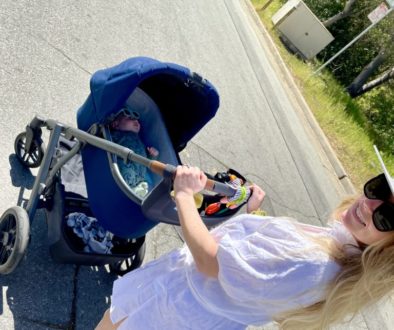Search Inside Yourself
So!
I got to attend a Search Inside Yourself course at work last week.

What is it?
- A 2-day program to develop emotional well-being, resilience and connection with others
- It’s an interactive workshop that combines mindfulness and neuroscience to develop emotional intelligence, including self-awareness, self-management, motivation, empathy, and leadership. Calm & focus your mind.
My learnings:
Attention training can grow and improve similar to working out your muscles
- Practice re-orienting your mind
- Our minds are wild with rich territory if we learn to see it
Attention: directing the mind to an object
Meta-attention: Attention of attention, the ability to know your attention has wandered

- Keep the intention
- Distractions happen, no need to fight them
- May notice new feelings and thoughts in the attempt to find silence
- Focusing on breath causes our minds to run around like a new puppy and it’s ok
- Try to be present
Emotions are physically felt and stored in the body
Approach with curiosity and kindness
Emotional charge exists with most thoughts
Emotional skills are trainable
Mindfulness develops self-awareness that enables other emotional intelligence domains
Self-awareness: pay attention to the body. From existential to experimental
Self-management: from compulsion to choice
Can use meditation to solve problems like memorization
Neural plasticity: what we focus on changes the physical makeup of our brains
We think → we do
Next time you feel an emotion, try to locate where you physically feel it in your body.
Our bodies show signs of thoughts before we voice it:
Use journaling to discover your honest thoughts and feelings that may have been covered in daily routine of being busy. By slowing down, you can uncover thoughts and emotions.
Practice mindful conversation
- “I hear that you’re saying…”
- Often times we want to interject with a relatable story, but try to hold off so you’ll hear more from the speaker
- Giving more space for listening improves connection
Mindful Walking
- What is it? Walking while noticing the physical parts of your body
- By slowing down your walk, you physically calm your brain
Self-Management
- What resources can we find in ourselves to help us?
- Compulsion —> Choice
- “Between stimulus and response, there is a space. In our response lies our growth and our freedom.”
- Mindfulness creates space around our emotions.
How to respond to triggers?
- Amygdala region in our brain sends signals of threats (physical, social, imaginative) and down regulates prefrontal cortex causing us to have less focus around our morals
- We’re wired to physically regulate even before we mentally notice
- Respond to triggers using the pneumonic device, SomeBody Needs R&R
- Stop
- Breathe
- Notice
- Reflect
- Respond
- Emotion Management strategies

Make physical transitions to encourage mental transitions
Open the hand of the mind which is so often clenched around thoughts/ideas
Just 1 minute of meditation can calm our minds
Consider starting meetings with a “mindful minute” – moment of silence
Throughout the day, make little moments to check in for emotional clarity
We all have some influence around others
Motivation
- Process of discovery
- 3 areas:
- 1. Alignment: understanding values
- Pleasant life – doesn’t promote happiness
- Life of engagement
- Meaningful life – strongest correlation to happy life
- 2. Envisioning: seeing our desired future
- 3. Resilience: ability to bounce back from obstacles
- 1. Alignment: understanding values
“In a sense, we learn from the past what to predict for the future and then live the future we expect.”
Shoot for the moon to at least get half way
Write your goals in present or as if you’ve achieved them to spark the seed and give it mental attention
- It’s easy to be afraid
- Don’t give up on your goals
Resilience: an ability to recover from or adjust easily to misfortunate/change
- 3 steps:
- 1. Inner calm
- 2. Emotional resistance
- 3. Cognitive resilience: the minds is a great servant but a terrible master
Explanatory Style:

Cultivating optimism:
- Become aware of negative biases
- Use mindfulness
- Transformation
Empathy
- Don’t use “at least” when trying to be empathetic
- Rarely a response makes it better but rather a connection
- “I don’t know what to say”
- Ability to experience and understand what others feel while maintaining a clear discernment about your own
- It is not psychologizing or agreeing with people
- Self-awareness helps one become empathetic
- Sometimes “I can imagine” isn’t correct and instead ask more questions and say “I can only imagine”
- Studies show large neural response occurs in our brains when we see negative things happen to those who are similar to us
- Empathy is affected by perceived falseness and perceived “in-group” or “out group”
- Foundational empathy practices:
- seeing similarities in others
- Offering kindness
- Listen for feelings
Leadership
- Leading with compassion
- Communicating with insight
- Think, feel, make sense → Behavior → Influence
- Start to build awareness on our current leadership status
- Practice compassion for you and others to be happy
Mindfulness, happiness
↑
⭕
↓
Worry, emotional suppression
“Leading was not about their success but the success they could create by empowering others to lead.” -Bill George, HBS
Difficult conversations: verbalize 3 levels of the conversation
- Content
- Feelings
- Identify
- Am I competent?
- Am I a good person?
- Am I worthy of love and respect?
Check your intention and decide whether to raise the issue
Start from the “third story”
Explore their story and yours
Problem-solve – It’s easy to have others or our own emotions take up large parts of our mental space
And that’s a wrap (or rap?) my friends. 😉




